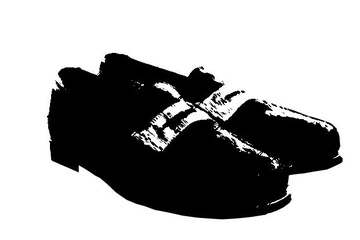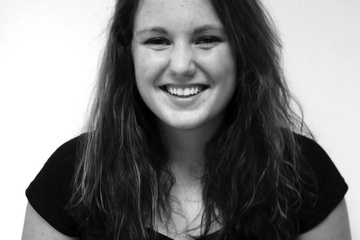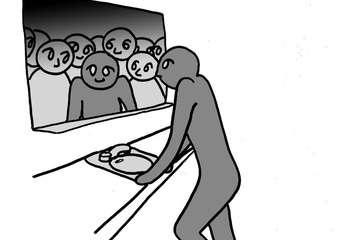It’s day 29 of being home for winter break, and I am starting to get a taste of what it’s going to take to become a real woman living in the real world. I have high hopes of eventually being employed someday. If it happens, it will be magical.
To get employed, my mom tells me, I will need to attend an interview. I will need to look presentable in said interview, she says, a cut above my signature jeans and ponytail. This means the unthinkable: I will need to go shopping.
I avoid malls like I avoid that kid in section, and do a pretty good job of it: My last mall visit happened in middle school. Today, I re-enter. Shut in a changing room I experiment with “business outfits,” which are broader-shouldered and bulkier than normal-person clothing. My body looks portly beneath the frumpy fabric, so my mom recommends I try adding heels—a clothing item I tend to wear for approximately 15 minutes each semester on the way to a formal. (I slide them off the second I arrive at the dance, like all practical souls do.) Heels are important, my mom says, because they make one look elevated and elegant. Looks like the day will involve purchasing more than a pantsuit.
Fresh out of DSW with my first pair of stilettos, mom mentions that she has plans to get her eyebrows waxed the next day and wonders if I want to do the same. She casually questions when I last had someone look at my eyebrows, and I casually answer that it was quite a while back. She feigns a half-smile and nods.
When the Vietnamese lady who owns the local nail and waxing shop squats down and stares into my face, she screams. Not a gasp, but a full-fledged screech that causes all the middle-aged women getting pedicures to snap their heads in my direction and giggle. “Lot of work to do,” the owner sighs, pointing me towards her operating table of waxation.
She does not mess around. Seconds later I am stretched out horizontally getting a full-face wax. The thin baby hair coating my cheeks, neck, chin, upper lip all disappears, ripped away strip by hot wax strip. I writhe and crinkle my face with each of her pulls. “This is torture, right?” she chuckles.
Once my face is hairless, Mom wants to know about the hair on top of my head—the hair that’s supposed to be there. To her surprise, I had very responsibly gotten my hair cut two weeks ago (point for me!). What mom really wants to know, though, is the last time I blow-dried my hair. Womp womp. I do not own a hair dryer…or a hairbrush. Combs work just fine.
Mom begins to enlighten me with her mystical hair care knowledge. Apparently there’s a way to prevent hair from looking “limp” and “plastered to one’s forehead,” and it involves using a hair dryer along with multiple models of hairbrushes. Her tone is loving and understanding, with only a very slight edge of accusation.
Two hours later, we’ve purchased a hair dryer and my face is still blotchy red. Perturbed about my quite visible facely tenderness, my mom infers that perhaps the problem is one of moisture. I’m really not the face type—I’ve never been into makeup or face washing, and I was not aware that face moisturizing was a thing people did. Mom hands me a bottle of Olay and advises me to moisturize my face and neck every night. “Got to prevent those wrinkles!” she chimes.
While we’re on the subject of faces, Mom decides to go for gold. We will confront the dreaded final frontier: makeup. Makeup cannot be explained; it must be handed down experientially.
When we get home I meet her in her bathroom, stare into its wide mirror lined with glowing bulbs. Mom has prepared the counter by laying her beauty products out across the counter so that the whole bathroom looks like a paint studio: fluffy brushes, open-faced pallets holding powders colored rose and peach.
She swishes her brushes into the powders, dots the skin-tone speckles all over my face as if she’s replicating Seurat’s pointillism. Blush goes in a thin oval above the cheekbones, while concealer saves the day by covering the baggy evidence of sleep-deprivation that hangs below my eye sockets.
I gaze into the mirror at a newly moisturized, freshly plucked and powdered face. The strands of my hair are dryer-kissed and tattered with flyaways. What will the employers think?





